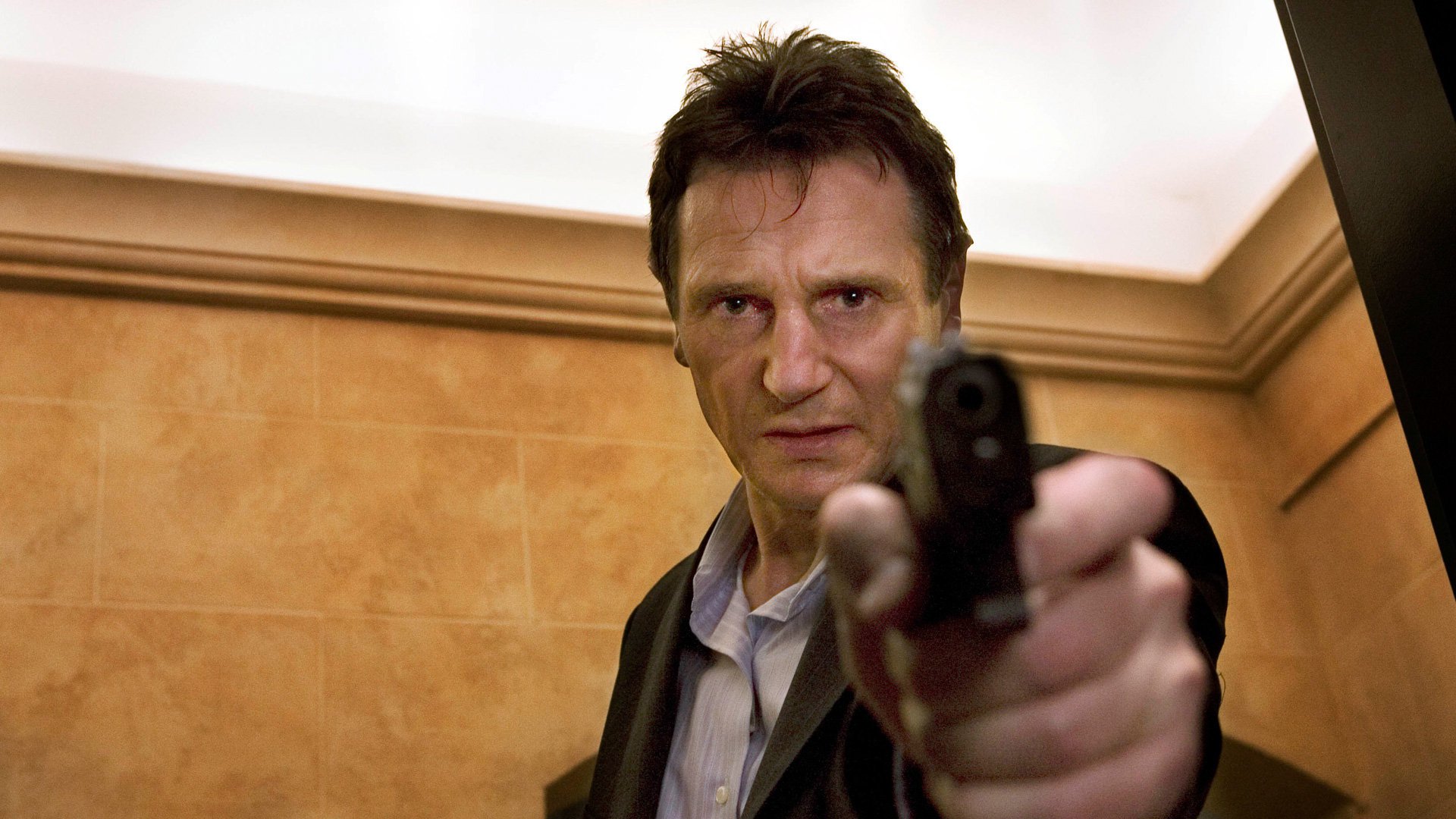TAKEN. A straightforward action film that became a phenomenon

The plot of the movie is simple. Parents agree to let their seventeen-year-old daughter (who, for some reason, behaves like a 12-year-old – expressing joy by jumping up, squealing, etc.) go on vacation to France from the USA. There, she gets kidnapped. The father sets out to rescue her.
“Taken” is an action film and, as such, is a kind of return to the roots of the genre. It is very dynamic and at the same time straightforward cinema, but not archaic. The plot of “Taken” resembles another classic of the genre – Mark L. Lester’s “Commando” with Arnold Schwarzenegger. The older film told the story of a commando whose daughter was kidnapped, and he set out alone to rescue her. “Taken” essentially tells the same story, so theoretically, it can be considered derivative. And indeed, it is. However, this film has an advantage that “Commando” lacks – a commitment to credibility.
First of all, the hero – in no way resembles the famous John Matrix – Arnold. Liam Neeson in the role of a former CIA agent looking for his daughter is a surprise, as this actor was not associated with action cinema in any way. It turns out to be an additional asset of the film, especially since Neeson as an agent convinces from the start. No one expects feats on the level of Jason Bourne from him, and as it turns out, he doesn’t fall far behind. The daughter is kidnapped, time is running out, and the hero doesn’t even give himself a moment to breathe. There is an impression that he doesn’t even have time to look at the clock. The search for his daughter goes surprisingly smoothly precisely because no one expects intervention so quickly. The hero counts on an element of surprise, provokes, hoping for some chance, a twist of fate. Fate turns out to be kind. The kidnappers were clumsy, leaving enough clues behind, which the hero carefully picks up, gradually reaching the source of evil. He shakes its foundations. All this to reclaim his child.

The film is as simple as the characters are straightforward. There is no place or time for nuances. The daughter is pretty, good, and innocent. Worth saving. Her friend, with whom she went to Europe, is not so innocent. She seeks adventure and finds it. She, too, gets kidnapped, but unfortunately, her dad is not a CIA agent, and he won’t come to her aid. The mother of the titular kidnapped divorced the hero precisely because of his job and constant absence at home. She remarried, to a very wealthy man, and tries to be as cold as possible to her ex-husband (played with a single note by Famke Janssen, but she can’t do otherwise because the script demands it). The woman knows that in a threatening situation, she can’t rely on her new partner. She asks (though she doesn’t have to ask) for help from her ex-husband and receives it. There are still black characters. Evil is evil, that’s it. They don’t have names. They are all more or less the same. Sullen, gloomy, they look bad. Armed to the teeth. There are also representatives of the law in France. Clumsy, unable to resist evil. Corrupt. Weak.
All of this has been on the screen many times. In Europe, the film achieved moderate success (another matter that it portrays it in a clearly negative light as a hotbed of corruption and moral decay, but the audience doesn’t know that before the screening). Unexpectedly, however, in the USA, the film made a big impact. It turned out to be such a hit that a decision was already made to make a sequel. And to think that it was Americans who refrained from showing the film in theaters for a long time.
What is the phenomenon of “Taken”? Liam Neeson couldn’t have been the magnet, as he hadn’t played in such films before. The reasons are different. The first is the simplicity and transparency of the screenplay, which leaves no room for grand conspiracy theories. This film is precisely about what it wants to be about. The saving of the life and innocence of the kidnapped daughter. The second reason is the surprising freshness of the execution, considering such a well-worn topic. The film comes from Luc Besson’s stable, which unfortunately does not guarantee anything good. It doesn’t even guarantee good entertainment, partly why Americans reject his cinema. As unbearably plastic, tacky, kitschy, completely unbelievable, and stupid. However, “Taken” in no way resembles the director’s earlier half-products. Director Pierre Morel did a lot to make his film look professional, and at the same time, it never comes close to cheapness, falseness, grotesque, and fantasy, so typical for subsequent parts of “Taxi” or “Transporter.” His overriding goal is evident: attention to logic and cause-and-effect order, a complete novelty in Besson’s production.

Apparently, viewers missed action movies where these attributes were cared for. They longed for decent directorial work. It doesn’t even have to be highly original. They can watch the story they already know once again. It doesn’t matter to them as long as it’s credible. Morel succeeded in this art.
In the 90s, the worn-out phrase “a film full of action and tension” often appeared on the covers of video tapes. For connoisseurs of the genre, it was obvious that if this inscription is on the box, then this film should be avoided because it lacks those attributes. In the case of the release of the “Taken” DVD, such a phrase would be fully justified. But today, will anyone believe in this slogan?

